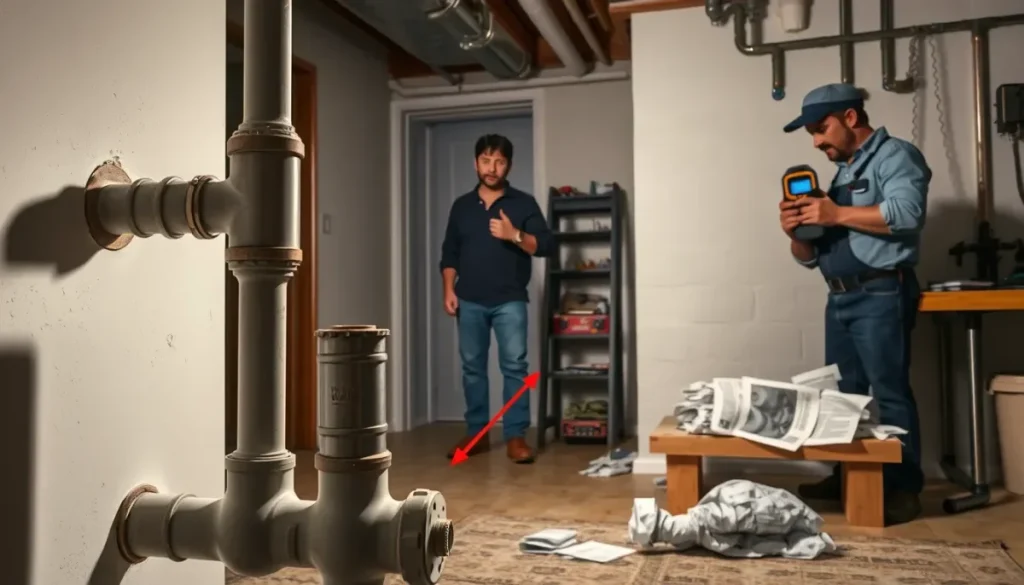When it comes to gas line installation, safety should always be your top priority! Did you know that improper installation can lead to gas leaks, which pose serious dangers to your home and loved ones? Gas leaks can cause explosions and fires, making it crucial to get it right the first time. In this article, we’ll dive into the top 10 gas line installation mistakes that homeowners often make. By avoiding these pitfalls, you can ensure a safe and efficient gas line installation in your home!
Inadequate Planning and Design
One of the biggest mistakes you can make is jumping into installation without a solid plan. Trust me; I’ve seen it happen! You might think you can just wing it, but that often leads to chaos. Assessing your building’s needs is essential. Consider factors like gas usage, peak load requirements, and even potential future expansions. A well-thought-out plan can save you time, money, and a whole lot of headaches down the line. So, take a moment to sketch out your installation plan before you start.
Improper Sizing of Gas Lines
Sizing your gas lines correctly is crucial for proper gas flow. If your lines are too small, you might find that your appliances aren’t getting enough gas to operate efficiently. This can lead to frustrating situations, like a stove that won’t heat up properly or a water heater that takes forever to warm up. To avoid this, make sure you understand the gas flow requirements for each appliance and size your lines accordingly. There are plenty of online calculators and guides that can help you determine the right size.
Inadequate Ventilation and Clearance
Did you know that proper ventilation is key to the safe operation of gas appliances? If you don’t allow enough clearance around your appliances, you could be setting yourself up for trouble. Poor ventilation can lead to carbon monoxide buildup, which is extremely dangerous. Always check the manufacturer’s specifications for clearance requirements and ensure your installation provides adequate ventilation. Your safety is worth the extra effort!
Poor Sealing and Connection Techniques
When it comes to sealing and connecting gas lines, you can’t afford to cut corners. I once tried to save a few bucks by using cheap fittings, and let me tell you, it was a disaster! Gas leaks can occur if connections aren’t made properly, leading to safety hazards. Always use high-quality fittings and follow best practices for making secure connections. Don’t forget to double-check your work!
Neglecting Pressure Testing and Leak Detection
After installation, it’s crucial to conduct pressure tests and leak detection checks. Skipping this step can leave you with undetected leaks that could be dangerous. I learned this the hard way when I ignored a small hissing sound, only to find out later that it was a gas leak! Make sure to follow the proper procedures for pressure testing and use a reliable leak detection solution. Your peace of mind is worth it!
Ignoring Local Building Codes and Regulations
Every area has specific building codes and regulations regarding gas line installations. Ignoring these can lead to serious consequences, including fines and safety hazards. Always familiarize yourself with local codes before starting your installation. If you’re unsure, don’t hesitate to reach out to your local building authority for guidance. It’s better to be safe than sorry!
Using Improper Materials or Installation Techniques
Using the wrong materials can compromise the integrity of your gas line installation. I once made the mistake of using PVC pipes instead of the recommended materials, and it was a costly lesson! Always choose the right pipes and fittings designed for gas line installations. Consult with professionals if you’re unsure about the best materials to use.
Attempting DIY Installation
While DIY projects can be fun, gas line installation is not the place to experiment. The risks involved are too significant. I’ve seen friends try to tackle gas line installations themselves, only to end up calling in professionals to fix the mess. If you’re not a licensed professional, it’s best to leave gas line installations to the experts. Your safety—and that of your family—depends on it!
Neglecting Regular Maintenance and Inspection
Even after a successful installation, your job isn’t done! Regular maintenance and inspections are crucial to ensure your gas lines remain safe and functional. I can’t stress enough how important it is to schedule these checks. Gas lines can develop issues over time, and catching them early can save you from serious problems later on. Make it a habit to have your gas lines inspected regularly.
FAQs on Gas Line Installation Mistakes
-
What are the signs of a gas leak?
Look for a rotten egg smell, hissing sounds, or dead vegetation near gas lines.
-
How often should gas lines be inspected?
It’s recommended to have them checked at least once a year.
-
Can I install a gas line myself?
It’s best to hire a licensed professional due to safety risks.
-
What materials are best for gas line installation?
Use materials specifically designed for gas, such as black iron or flexible gas piping.
-
What should I do if I suspect a gas leak?
Evacuate the area immediately and contact your gas company or emergency services.
Conclusion
Avoiding gas line installation mistakes is crucial for your safety and the efficiency of your home. By following the tips outlined in this article, you can ensure a successful installation that meets all safety standards. Remember, if you’re ever in doubt, don’t hesitate to reach out to professionals. They can provide the expertise you need to keep your home safe. Have you had any experiences with gas line installations? Share your thoughts or questions in the comments below!



